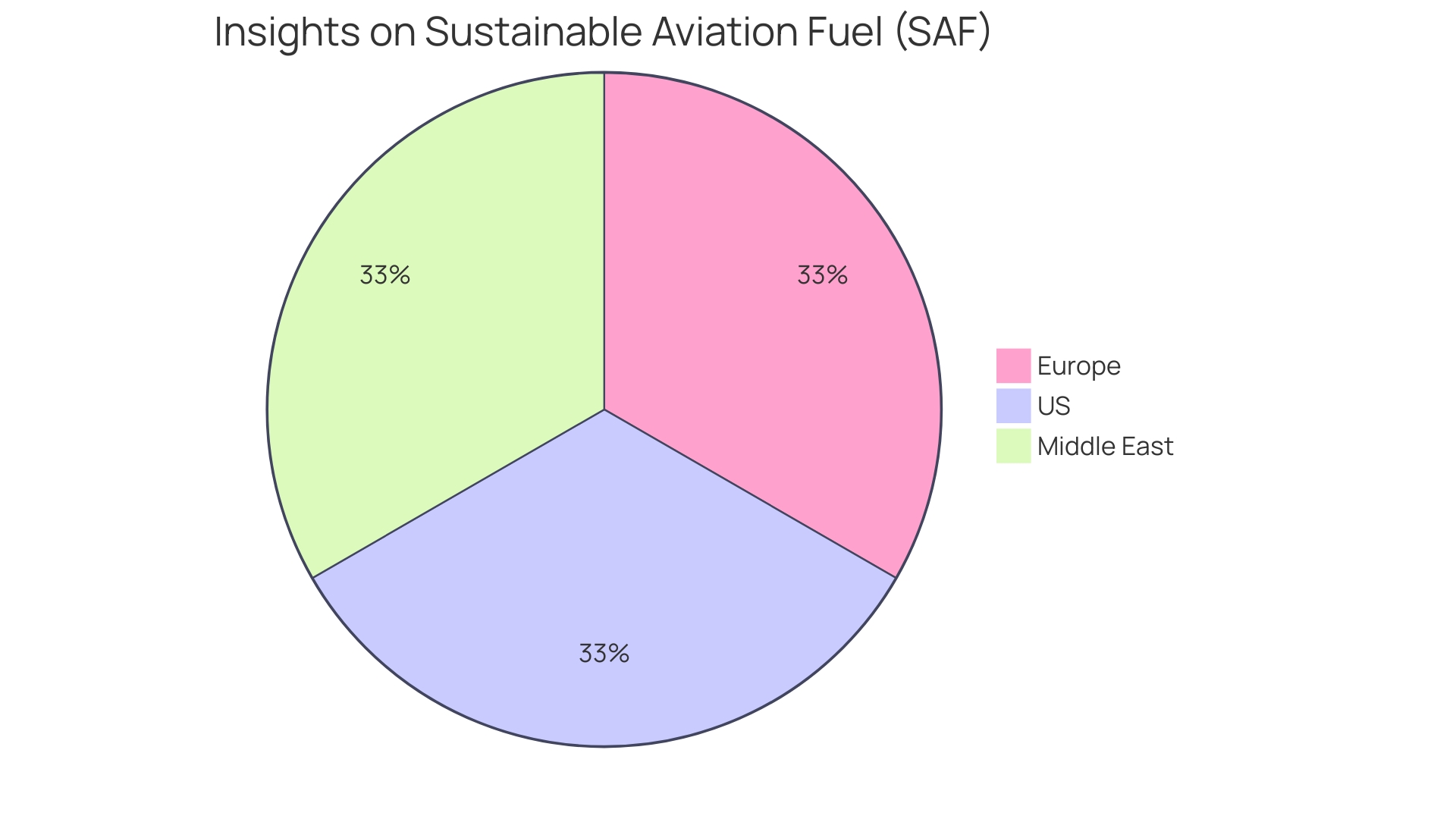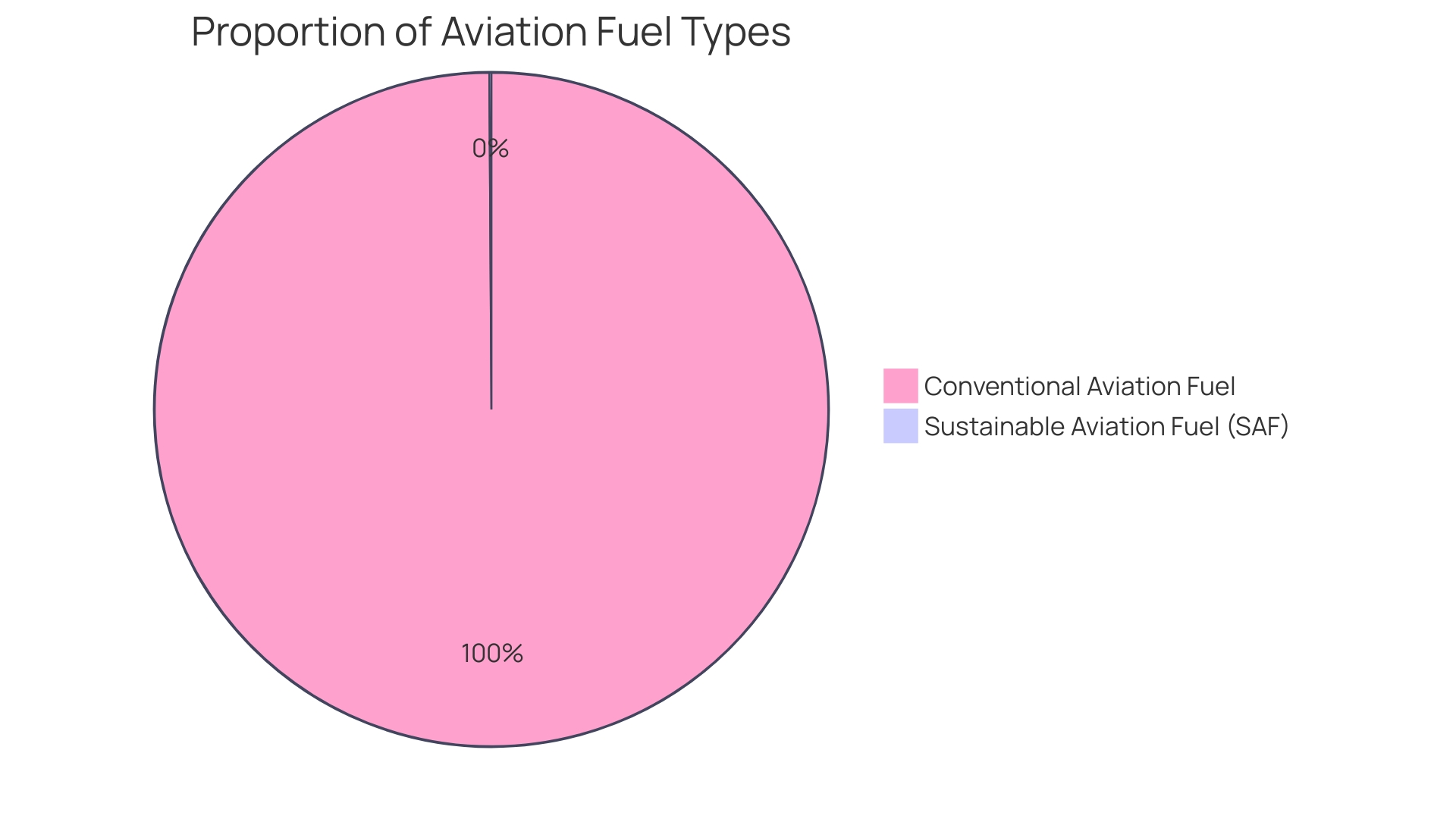Introduction
The recent transatlantic flight operated by Virgin Atlantic, powered entirely by alternative fuels, marks a significant milestone in the aviation industry's journey towards sustainability. This groundbreaking achievement highlights the critical role of Sustainable Aviation Fuels (SAF) in reducing the environmental impact of air travel. As the industry embraces the transition to greener flying, major players like Airbus are actively working towards making all their aircraft SAF-capable by 2030.
However, challenges such as the scarcity of alternative fuel supplies and the substantial investment required for hydrogen fuel systems at airports remain. Innovative solutions, like those proposed by Universal Hydrogen, are crucial in overcoming these obstacles. With a passionate community of aviation enthusiasts and professionals, along with advancements in tracking and forecasting, the industry is driving towards a future where efficiency, sustainability, and innovation converge.
Together, these efforts contribute to the global goal of a safer, united, and environmentally responsible world.
Factors Affecting Aircraft Refueling Time
The recent landmark transatlantic flight operated by Virgin Atlantic, powered entirely by alternative fuels, heralds a transformative era in aviation sustainability. No ordinary journey, this flight from London Heathrow to New York's JFK airport signifies a pivotal step toward achieving net-zero carbon emissions in the aviation industry. The success of this flight underscores the critical role of Sustainable Aviation Fuels (SAF) in reducing the environmental impact of air travel, with airlines and governments recognizing the potential for greener flying.
Airbus, one of the industry's leading aircraft manufacturers, is proactively championing this change. By 2030, Airbus aims to make all its aircraft SAF-capable, a testament to its commitment to sustainable aerospace. The partnership with Emirates and Engine Alliance further illustrates the collaborative efforts to drive meaningful change, with both organizations celebrating their 15-year relationship and shared dedication to sustainable aviation during a recent SAF demonstration flight.
Despite these advancements, challenges loom large on the horizon. The scarcity of alternative fuel supplies and the substantial investment required to implement hydrogen fuel systems at airports are significant hurdles. For instance, Air Liquide's 50 years of experience in supplying cryogenic hydrogen for European Space Agency's Ariane rockets is now being channeled into the aviation sector.
Their involvement in the H2Fly consortium, which successfully flew an aircraft on liquid hydrogen, reflects the ongoing exploration of hydrogen's potential. However, with cost estimates reaching up to a billion dollars per airport for the necessary infrastructure, innovative solutions are imperative.
Universal Hydrogen is one such innovator proposing a resolution to the complex fuel supply issue. Meanwhile, the aviation sector continues to focus on safety, with commercial aviation being one of the safest transport modes available, thanks largely to its robust safety culture and infrastructure.
The industry also enjoys a passionate community of aviation enthusiasts and professionals, like Chris, a Commercial Pilot who shares insights and developments through Flightradar24, a global flight tracking service. Such platforms not only provide real-time aircraft data but also enrich the flight tracking experience with a comprehensive glossary of aviation terms.
In the face of fluctuating weather conditions, which often cause delays and cancellations, the industry's commitment to continual improvement in tracking and forecasting is unwavering. The combined efforts of companies, experts, and government entities are steering aviation toward a future where efficiency, sustainability, and innovation converge, ensuring that each journey contributes to the global goal of a safer, united, and environmentally responsible world.
Importance of Accurate Fuel Measurement and Documentation
Achieving net-zero carbon emissions is a significant goal within the aviation industry, and recent developments showcase the ongoing efforts to meet this challenge. For instance, Virgin Atlantic's commitment to customer service and innovation has been recognized with the Global Five Star Airline rating by APEX for several years. In alignment with environmental goals, Virgin Atlantic, in collaboration with Delta Air Lines, is expanding its transatlantic network and introducing new routes, all while keeping sustainability in focus.
Airbus, a leading aerospace manufacturer, has pledged to make all aircraft 100% Sustainable Aviation Fuel (SAF)-capable by 2030. This commitment is highlighted by the longstanding partnership between Airbus, Engine Alliance, and Emirates, which has culminated in the successful demonstration of an SAF-powered A380 flight. The shared vision for a sustainable aviation future underpins this collaboration.
In the realm of hydrogen fuel, Air Liquide's extensive experience with cryogenic hydrogen for Esa's Ariane rockets has paved the way for exploring hydrogen's potential in aviation. Alongside Airbus and Group ADP, Air Liquide's participation in the H2Fly consortium has led to the successful flight of a hydrogen-powered aircraft. Although the infrastructure for hydrogen fueling at airports presents financial challenges—with Bain & Company estimating costs up to a billion dollars per airport—companies like Universal Hydrogen are innovating solutions to overcome these barriers.
The aviation industry also benefits from the expertise of companies like Baker Hughes, which, through its business Druck, provides cutting-edge pressure measurement technology essential for fueling processes. Druck's solutions are vital for ensuring the safe and efficient operation of aircraft.
With public and private sectors investing in SAF, the industry is actively working to demonstrate that this renewable fuel is as safe and reliable as conventional jet fuel. The move towards SAF is likened to historical transitions in gasoline and diesel chemistry, requiring compatibility with existing jet engines.
The evolution of bunkering services reflects the dynamic nature of fueling in the aviation sector. Crowded ports and increased vessel sizes have led to more frequent Ship-to-Ship (STS) bunkering. The Port of Singapore stands out as a prominent bunkering hub, delivering an impressive 25 million metric tons of fuel in the first half of 2023 alone.
As the aviation industry continues to adapt and innovate, these efforts underscore the technical and analytical advancements driving towards a more sustainable future, with a focus on efficiency, safety, and environmental responsibility.

Best Practices for Safe Aircraft Refueling
Refueling a modern aircraft is a critical process, deeply intertwined with the aviation industry's commitment to safety, efficiency, and sustainability. It is not merely about the time taken to pump fuel into the tanks; it's also about the precision and advancements in fueling technologies. With the industry's focus on sustainable aviation fuels (SAF), companies like Airbus are actively working towards making their aircraft fully SAF-capable by 2030, matching ambition with actionable strides towards a net-zero carbon emissions future.
In collaboration with key players like Emirates and Engine Alliance, Airbus has powered demonstration flights that cement the role of SAF in next-generation aviation.
The complexity of refueling is further highlighted by the entry of hydrogen as a potential game-changer. Air Liquide, with its 50-year experience in supplying cryogenic hydrogen, has embarked on projects to explore hydrogen's viability in aviation. Although the transition to hydrogen fuel presents significant logistical and financial challenges, as noted by Bain & Company's billion-dollar-per-airport estimate, the successful test flights by H2Fly consortium signify a leap forward in this direction.
Innovative companies like LanzaJet are also contributing to this transformation with their Freedom Pines Fuels plant, pioneering the ethanol-to-SAF production process that could revolutionize how aircraft are fueled.
The data-rich environment of the aviation sector, from manual pilot logs in the early 20th century to today’s fully automated systems, has been essential in refining refueling operations. High-fidelity sensors and predictive analytics ensure not only that the precise amount of fuel is delivered but also that the engines and systems operate at peak efficiency. Real-time data management is crucial to minimize the environmental footprint and improve the passenger experience.
The future of aircraft refueling is a dynamic landscape of traditional procedures and cutting-edge innovations. It’s a blend of historical practices and the promise of a sustainable, data-driven era, where the time taken to refuel an aircraft is just one piece of a larger, more complex puzzle. As the aviation industry continues to evolve, the refueling process will undoubtedly keep pace, reflecting the broader shifts toward safety, efficiency, and sustainability.
Impact of Refueling Time on Flight Operations
Aircraft refueling is a critical aspect of airline operations, not only in terms of safety and turnaround times but also considering the ongoing industry efforts to reduce carbon emissions and advance towards net zero. Virgin Atlantic, a pioneering carrier known for its commitment to innovation, is leading the charge in sustainable aviation fuel (SAF) usage. The airline's expansion in the U.S. with new routes to Austin and Tampa reflects its growth strategy, which is underpinned by a sustainable ethos.
Similarly, Airbus's ambition to make all aircraft 100% SAF-capable by 2030 illustrates the broader industry's dedication to eco-friendly initiatives.
The transition to SAF and hydrogen fuels is not without its challenges. While Air Liquide's recent H2Fly consortium success in flying an aircraft with liquid hydrogen marks a significant leap, the financial burden of equipping airports with the necessary infrastructure is considerable, with estimates of up to a billion dollars per airport by Bain & Company. Despite these costs, the potential for hydrogen as a low-carbon energy source is immense, especially when produced using renewable electricity.
Moreover, the physical properties of fuel and their interaction with aircraft performance are critical considerations. For instance, the lower air density in hot weather conditions can affect jet engine performance, requiring more takeoff distance and potentially impacting fuel efficiency. This underscores the importance of not only the type of fuel used but also the external conditions that affect aircraft refueling and operations.
As the industry navigates these complex variables, the insights from companies like Universal Hydrogen and the strategic partnerships between airlines and aerospace manufacturers, such as Emirates and Engine Alliance, will be vital in shaping the future of aviation fueling.

Conclusion
The recent transatlantic flight operated by Virgin Atlantic, powered entirely by alternative fuels, has marked a significant milestone in the aviation industry's journey towards sustainability. This groundbreaking achievement emphasizes the critical role of Sustainable Aviation Fuels (SAF) in reducing the environmental impact of air travel. Major players like Airbus are actively working towards making all their aircraft SAF-capable by 2030, demonstrating their commitment to sustainable aerospace.
However, challenges such as the scarcity of alternative fuel supplies and the substantial investment required for hydrogen fuel systems at airports remain. Innovative solutions, like those proposed by Universal Hydrogen, are crucial in overcoming these obstacles and ensuring a sustainable future for the industry. Collaboration between airlines, governments, and industry experts is essential in driving meaningful change and achieving the global goal of a safer, united, and environmentally responsible world.
The aviation industry benefits from a passionate community of aviation enthusiasts and professionals who contribute to advancements in tracking and forecasting technologies. Platforms like Flightradar24 provide real-time aircraft data and enrich the flight tracking experience, enhancing efficiency and safety in air travel.
In conclusion, the aviation industry is making significant strides towards a future where efficiency, sustainability, and innovation converge. The commitment to greener flying, the exploration of alternative fuel sources like hydrogen, and the continuous improvement in tracking and forecasting technologies all contribute to a more sustainable and responsible aviation industry. With the dedication of industry leaders and the collective efforts of stakeholders, the vision of a safer, united, and environmentally responsible world is within reach.




